A 27-year-old Norwegian has built three village-based children’s homes on the Thai-Burmese border for war orphans and victims of neglect and abuse.
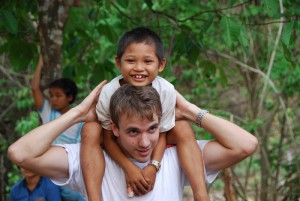
It must have been a culture shock for 12-year-old Ole-Jørgen Edna. His Norwegian upbringing did not quite prepare him for the kind of Third World human misery that he witnessed on a family trip to refugee camps along the Thai-Burmese border back in 1998. Or perhaps it did. After all, not many families would travel a great distance to this part of the world and then chose to spend part of their precious vacation time visiting victims of ethnic conflicts from Burma.
[interactive copyright notice]
Ole-Jørgen’s father, a noted gastrointestinal surgeon and associate professor in Norway, and his mother, a cancer nurse, have always been staunch supporters of church charities providing among others desperately-needed humanitarian aid to civilians fleeing Burma’s decades-long war of attrition. The tour of refugee camps may have done little to Ole-Jørgen’s grasp of the scope of human sufferings but the experience somehow made a lasting impression on his young mind.
“I never thought that simple gifts, such as small toys, candies, toothbrushes, could bring big smiles and so much joy to hilltribe orphans in the camps,” recalled Ole-Jørgen.
Another thing that seared into his memory was the sight of the sprawling Mae La refugee camp in Thailand’s northern province of Tak, home to over 40,000 Karen refugees. Located on slopey hillsides, the refugee camp appeared to be a surreal idyll against a dramatic backdrop of steeply rising limestone cliffs.
“Rightly or wrongly, it looked to me like an ideal place in the wilderness, a perfect sanctuary to protect its inhabitants from attacks by the Burmese army.”
“I remember saying that I would come back one day.”
Ole-Jørgen thought he would be back, but it never occurred to him that he would be back to start the first orphanage seven years ago, in 2007, when he just turned 20. And then go on to found two more orphanages in Tak and eventually manage to put together the dedicated and well-trained staff of 20 people who today provide loving care to some 100 children.
Refugees in local schools
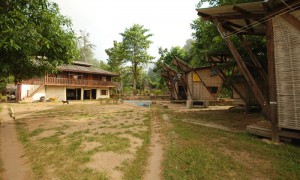
The Blessed Homes, as they are known, offer a family-like environment for children to grow up in to realise their full potentials and to become responsible members of their communities. All of the children’s homes at Noh Bo, Klee Tho Kloo and Mae Oo Ho in Tak province along the Thai-Burmese border are well integrated into the respective villages where they are located. Children go to local schools and mingle with other village and local Thai kids. Each child shares a room with 2-5 other children and is supervised by a dedicated staff member who serves as a surrogate parent.
Thar Oo, 15, a Karen ethnic, was one of the first children taken in by Ole-Jørgen and local church members even before the children’s home at Mae Oo Ho was built. Like other children in the village, Thar Oo goes to local Thai school. At Grade 6, he speaks Thai, Karen, Burmese fluently and is now dabbling in English, which will prepare him for future either in Burma, if and when peace is fully restored in his home country, or the option of being integrated into the Thai society.
“My mother killed herself, drinking herbicide after my father ignored her pleading not to fight the Burmese army. Then he got killed in fighting. Then my two sisters and I were taken care of by the local pastor and his wife before Ole took us in to Mae Oo Ho,” Thar Oo said.
After spending several months living under the care of Ole-Jørgen and local church members, Thar Oo, then 8 years old, and a few other children moved into Mae Oo Ho children’s home after Ole-Jørgen secured the seed fund from a generous American couple.
“We are so grateful. Without Ole and Mae Oo Ho children’s home, my sisters and I wouldn’t know what to do, who to turn to for help. We would not have the opportunity to go to school or to think about our future,” said Thar Oo, saying he wants to continue his education in Thai school and come back to help other disadvantaged young Karen children to have a head start in their lives.
How it all started
After Ole-Jørgen’s visit in 1998 to the refugee camps with family, he went back to Norway and, like most teenagers, got busy with studying and making future plans. After having finished high-school, he took one year out to study theology in London and to see the world. Towards the end of his London stay, the picture of the Mae La refugee camp kept popping up in his mind and he felt he had to come back to look at the refugee situation up close.
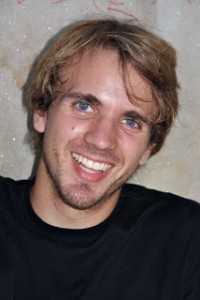
He started looking for volunteer works at the Thai-Burmese border.
“My idea was to spend one year, doing some field works, closer to the actions.” Ole-Jørgen was first offered to man an office of a charitable organisation in Chiang Mai, but soon was introduced to and got a job teaching English at the bible school in Noh Bo in Mae Sot.
Then Thar Oo and the other helpless children showed up. Ole-Jørgen’s first reaction was to help support these children until they grow up and be able to support themselves. Several of the first groups of children have already left the orphanages, got married and had kids of their own. “This is part of life. You deal with that as best as you can.”
“We don’t want to see any of our children grow up, leave orphanage and end up like parents that some of them ran away from. It would be painful to watch children grow up to become parents who abuse alcohol, who abandon kids or who create a dysfunctional family,” he said.
These young adults need secure jobs, but there aren’t many decent jobs in the villages.
“Many young fathers move to Bangkok or other big cities, get separated from wives or abandon them. The young mothers then find a new husband and perhaps the new husband doesn’t want the kids who are then thrown out.”
Next plan: a youth centre
Being familiar with the big picture of the village life gives Ole-Jørgen ideas how to try to help break this vicious circle. The idea is to start a Youth Centre for children after they leave the compulsory primary school or middle school to lead semi-autonomous existence as young adults pursuing vocational or university education in secure environment.
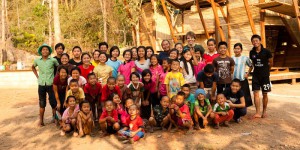
The planned youth centre in Mae Sot will help kids who finish grade 10 to get them further education and job skill if that is what they opt for.
“Most people in the village had 3-4 years of schooling before going to work in the fields because they didn’t see opportunities. At least for my kids they should know that at least they have the opportunity. If they choose to they can continue with education and go as far as they could.”
“At least we can give them job training. Vocational training. So they won’t be pushed around too easily in the Thai job market.
The youth centre is more of a transition place from orphanage to adulthood and independence to being in charge of one’s own life.
Why do you do it?
Starting an orphanage is not something that most people would think of when they are in their early twenties.
“I’m aware that many people would find what I do a little bit strange,” said Ole-Jørgen, a committed Christian.
The orphanages were shaped by his Christian belief. “When you see something wrong in this world, like children suffering or mistreated. It’s not because they have done something wrong. What it means is the world we live in is broken,” Ole-Jørgen said.
“That gives me the responsibility to do what I can to make it right. I don’t do this because I need to be better but because of the love God has for the children.”
“My core belief says every child is unique and every child has a purpose and that they are loved.”
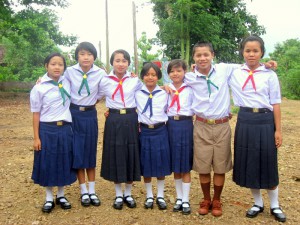
The contrast between Norway, one of the wealthiest countries on earth, and Burma, at the bottom rungs of the world’s poorest, gives Ole-Jørgen a rare glimpse into the gap between the have and the have-not. “But I never stay because of guilt. But because I met and got to know children I do care about. Whom I couldn’t just leave and not know what was going to happen to them.”
The orphanages are fully funded by donations from Norway, including from members of church in the small Norwegian town of Levanger, 600 kilometres north of Oslo where Ole-Jørgen came from. Many sponsors of the orphanages are nonbelievers. But some corporations or organizations that want to be apolitical baulk at providing support for Christian organizations like Blessed Homes.
Ole-Jørgen doesn’t find that reasonable.
“You bring your value system, worldviews, ideals of life to what you do, religious or secular.”
A meaningful life
Many of Ole-Jørgen’s friends from back home have come out to visit him.
“Some of them left with an understanding that their lives too could be much more meaningful than the current life they live back in Norway,” he said. Then he quickly corrects himself.
“Of course I’m not saying it’s not meaningful to have a good job and to lead that kind of a normal Norwegian life. But for me I can just say that I would certainly not exchange this life for anything else.”
“Sometimes people ask me how long I am going to stay. Some even ask if I am going to stay here for the rest of your life. That’s a long time.” He said he didn’t feel the needed to give an answer.
“But if children ask me that I will stay, if I’m going to move. I would say I’m not leaving. I’m staying. For children I’m dedicated as long as they need me and as long as I’m useful being a symbol, a father figure. I don’t see myself going anywhere.”
“But how I’m to be involved [with children’s home] may change. Even now, the children don’t need me at an orphanage all the time. Now I’m moving between orphanages. I go back to Norway 6-7 weeks a year.”
Ole-Jørgen attributes the well-run children’s homes to well-trained staff who care about the kids.
“I’m not the only one that kids rely on. Like in this place [Mae Oo Ho], Mary is the big mother to them all. Way more important to the kids than I am. Of course I have a role to play here too but it’s good to see that. Not everything depends on you. It’s a humbling thought. It’s also liberating in some way.”
